Two weeks ago while I was up at the ANT+ Symposium outside of Calgary I had a chance to spend some time running around in circles with two guys (Dr. Max Donelan and Mark Snaterse) from Simon Fraser University who developed a pacing and speed control algorithm and system that allows me to pace precisely against a given defined speed…without ever looking at a watch.
The speed control system works through a number of different hardware components that ultimately give you a beeping tone via ear bud that you in turn attempt to match your running cadence to. One beep equals one step. The faster the beeps, the faster you step. Just like matching a metronome. This effectively drives pace. But it’s not quite that simple, as the system has to be able to dictate a specific cadence to impact your pace.
So why would you want to drive pace anyway? Well they’ve found that for the average runner, you are able to maintain a given pace to within an error rate of 10% – which means on a 10K race run at 50 minutes you could be off by as much as 5 minutes – that’s huge! And for collegiate level runners, they found that was only reduced to about 4% error rate.
Of course, you’ve probably read before about benefits around running cadence (turnover) and the general concept that a higher turnover increases the elastic recoil – ultimately increasing efficiency, and and much of that is still applicable here. But in the case of this particular setup – the focus is more on altering cadence to drive pace than it is on maintaining a given high level cadence from an efficiency standpoint.
So how does it work? Well, I should first note that much of what you see here is about showing a concept – one that can then be ported down to a much small form factor, such as your normal GPS running watch. Obviously the system as displayed below isn’t practical for normal use, but that’s really just a case of how it’s currently packaged – there’s nothing stopping it from being put into a watch or iPhone app.
Anyway, onto the pieces. In the case of my test, I was wearing a backpack that had a few components strapped to it. The first is a highly sensitive GPS unit that’s accurate within a few centimeters – yes, centimeters. That’s much different than your average Garmin Forerunner GPS only accurate to within a few meters (on a good day).
That’s connected to stylish blue hat where the GPS receiver is located:
Also inside the backpack is a controller to wirelessly send the data to the laptop (where another person can control my speed remotely from afar) as well as an Arduino control board with an ANT+ chip mounted to it. This ANT+ chip enables them to capture heart rate and footpod cadence data (though the footpod cadence data actually isn’t required, merely just interesting). There’s also a typical SD card too to capture data – though much of it’s streamed real-time to the computer. And finally, attached is a pair of headphones so I can hear the beeping. Long term there may be other ways to either audibly, visually or via vibration allow you to keep on pace – but for now, this works fairly well.
Now, I mentioned a computer. The computer is manned by Mark, though it could just as easily be manned by your coach or someone else choosing to inflict pain on you. That’s because the computer interface allows one to remotely control your actions by changing the speed of the beeps, which in turn drive your pace.
And again, in a practical application – there’s no real need for this computer. This is purely for demonstration purposes. If this were pulled into a watch or app, it would all happen there – based on the settings you defined.
So now that I’ve talked about the pieces, how does it work in practice? Well, when you first start out the application essentially just watches what you’re doing – looking at your pace based on the GPS data. From there you can set a given speed in the application and the unit will change the beeping frequency that the runner hears via the headphones – and continue to change it until the runners speed requirement is met. This could be set at a defined pace for an entire workout/race, or multiple paces/speeds/parameters could be defined – as in a typical complex workout.
Because it’s probably easiest to show this in a short video clip – we selected an unlucky runner to run around in circles while Mark explained what was going on on the screen, and how it worked as he changed the runners speed remotely. All without the runner being audibly told to increase pace, or even what pace he’d be running at. The runner merely matched the beeps to his steps.

Showing off how the Speed Control system works at the ANT+ Symposium
As you can see, from the computer’s standpoint, the goal is to match the green line (your pace) to the white line (set pace). But as a runner, from your standpoint all you hear is beeping. Sometimes you can detect the changes in beeping (major shifts in pace)…but most often not.
Of course, I too had the opportunity to test this out as well – for quite a while actually.
We did a number of different tests, but probably the clearest was around having me snapped to set paces. In one test we had me run at three different paces, each pace for two minutes. I first started off at a 7:30/mile pace, then went down to a 6:30/mile pace, and then finally a 5:30/mile pace. Each time this occurred, the beeping would generally increase in frequency. But it would modulate (vary) based on the GPS pace (using that incredibly sensitive GPS receiver). So if I slowed down just a tiny bit, it would almost imperceptibly change the beeping frequency to get me back on track. In most cases, I wasn’t even aware it was shifting – since the changes were so subtle.
Perhaps the clearest example you can see is the below chart – which was a separate test where I had a set pace prescribed, then had the pace increased to match the computer directed pace, following which the pace was decreased again. The top chart is showing the frequency (cadence) shifts to keep me on target – while the middle chart is showing my actual speed.
What you see above is my almost perfectly consistent real-time pace (green line) compared to the white line (set pace). But in the case of the frequency (cadence) being delivered to me, it’s actually constantly shifting to keep my pace equal. Yet in my mind, I didn’t even notice these shifts.
It’s also worth pointing out that the little course I was on had two sharp 180* radial turns around a tree curb in it every 25 seconds – thus making it even more interesting that I was able to maintain pace despite having to sharply corner constantly.
Now take this a step further and they can ‘lock’ onto other attributes aside from just pace. For example – they can do the same with heart rate. Using ANT+ heart rate straps they can then change your running cadence to drive pace and in turn effort have you lock onto a nearly exact heart rate BPM – such as exactly 156bpm (+/- 1 beat). This is of interest because most folks today who use heart rate to train, do so by heart rate ranges instead of exact numbers – simply because that’s what is practical to pace by using today’s technology. It’s otherwise simply very difficult to adjust your pace to an exact 156bpm heart rate. But with this system, your brain is removed from that equation – instead allowing the computer to effectively control your pace.
In short: Your pace is now being controlled by someone other than you.
So where’s this all going? Well today it’s merely an algorithm – something to ultimately be implemented in other products. Their goal at the ANT+ Symposium was to talk to other companies about integrating it into products. And the interest was certainly there. Out of frame in some of the pictures on the second day was a host of people from different companies lining up to try it out (and run endless circles around a giant parking lot). These companies in turn would have to determine the mechanics and details of implementation. For example – is beeping the right method, or is something else? Should it instead be timed to music that would be digitally manipulated on the fly to in turn adjust your pace?
Lots of questions are still out there around implementation, but the practical side of the technology is clear: It’s remarkably sharp when it comes to keeping you on pace.
From a technology standpoint, these guys have filed all the right patent stuffs for their algorithm (and that’s what this comes down to – an algorithm) – hence why they were open to me showing it publically. If you’d like to learn more, check out their site with more of the work their doing.
Additionally – for the curiosity inclined in the room, Dr. Doneland did a pretty interesting TEDx talk recently on harvesting human energy from activities like running or cycling, to in turn charge devices. So, for all those of you looking to sip that morning coffee a bit more…here ya go:

TEDx talk on human energy harvesting
And finally – last but not least, if you’d like to read more from others on the concept of Speed Control, check out this serious of posts from the Sweat Science blog regarding the Speed Control project and their thoughts on it. This also touches more on cadence and control.
Thanks for reading – and as always, if you’ve got questions, feel free to drop them below – either I’ll attempt to answer them, or the fine folks from SFU can pitch in as well (after all, they’re the smart ones…they managed to avoid running in circles at 5,000ft and instead suckered me into doing such).
FOUND THIS POST USEFUL? SUPPORT THE SITE!
Hopefully, you found this post useful. The website is really a labor of love, so please consider becoming a DC RAINMAKER Supporter. This gets you an ad-free experience, and access to our (mostly) bi-monthly behind-the-scenes video series of “Shed Talkin’”.
Support DCRainMaker - Shop on Amazon
Otherwise, perhaps consider using the below link if shopping on Amazon. As an Amazon Associate, I earn from qualifying purchases. It doesn’t cost you anything extra, but your purchases help support this website a lot. It could simply be buying toilet paper, or this pizza oven we use and love.


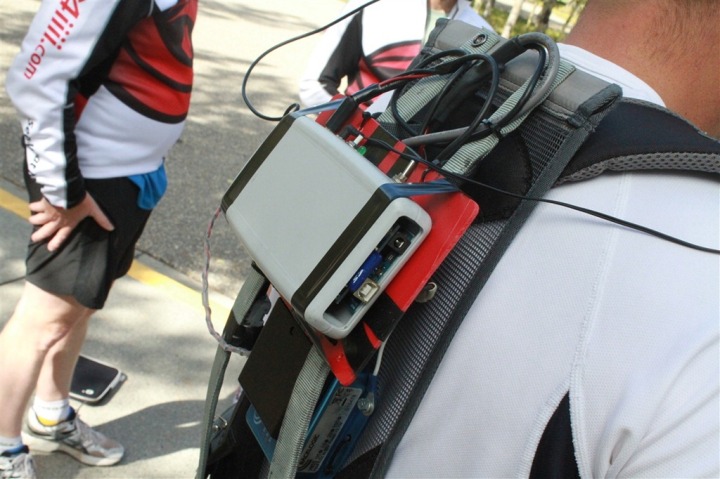
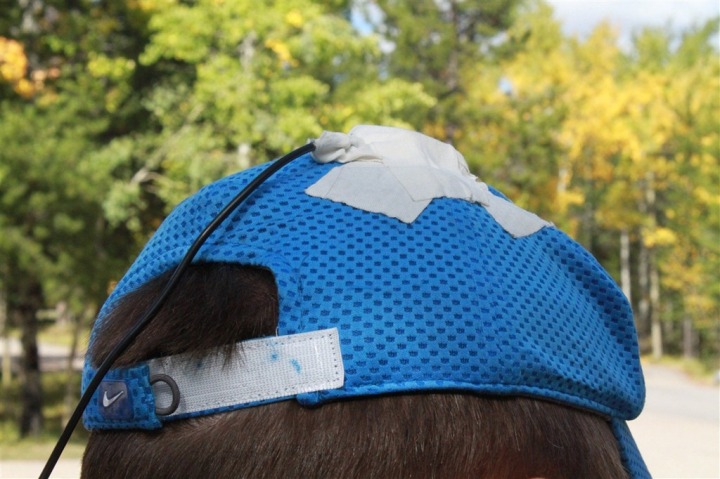
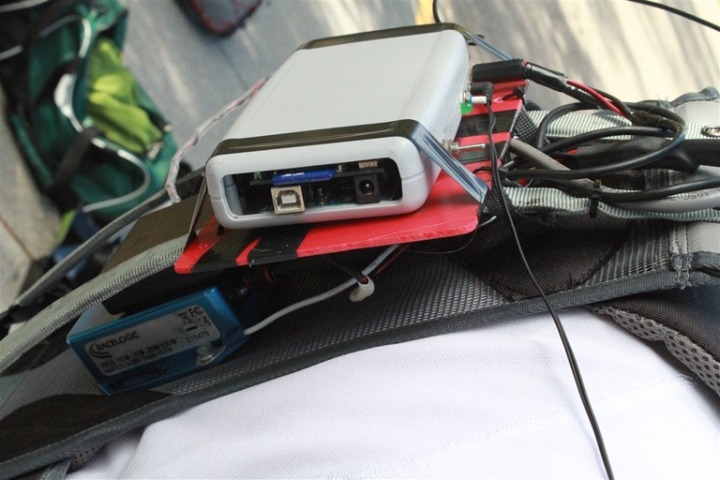
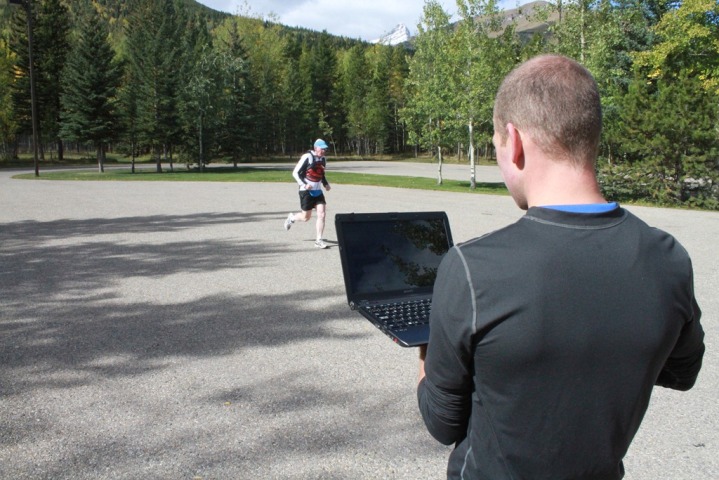
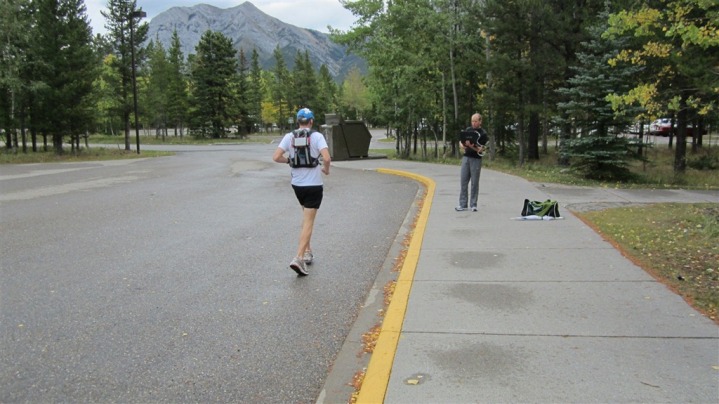
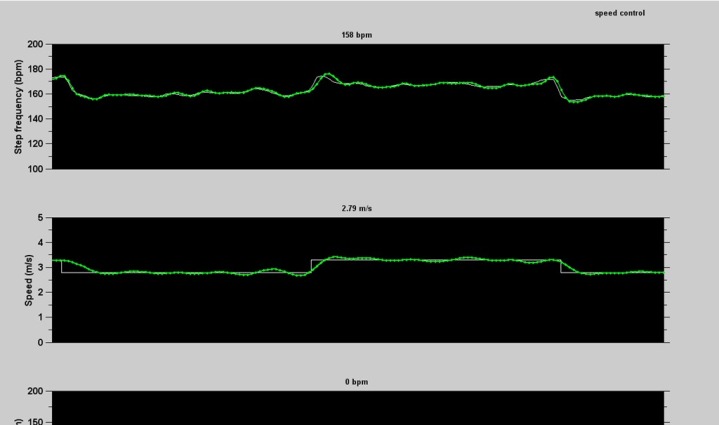
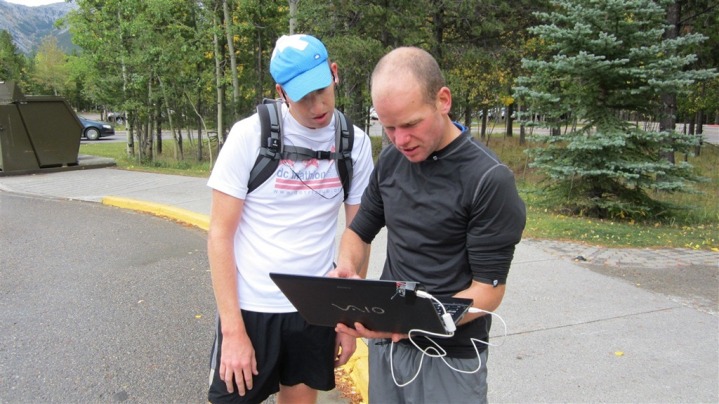
















This sounds really interesting stuff.
At the moment I’m trying to increase my speed with some 10k training, doing sprint sessions, tempo runs etc.. They are great for my speed work, but annoying to go out an run. If I was able to pre-program my target speeds onto a device (watch) and for that to control my training session I can see it working really well.
I’ve never trained to my heart rate, but I can see the uses there too.
Would be interesting to hear the beeps and see how annoying they might become.
Aside from the increased accuracy via the more sensitive GPS device, how is this much different than setting up pace targets or HR targets in your Garmin watch? For example, I can create a workout that says “Go for 5 miles at 7:00/mile pace”. If I am outside of that range, the Garmin beeps. Of course, I could also include a pace or HR range rather than a single number so it isn’t always beeping as you mentioned. The point being, aside from greater accuracy (and beeping to match the cadence required), it seems like this technology mostly exists today in Garmin watches. Might be worth noting for people that are interested in trying something like that out with their current GPS watches.
Lesser is More – if I understand correctly, the frequency of beeps is the difference.
Think of it like a metronome. The beeping happens at a set rate on your Garmin. Your pace target does not impact this.
With this particular device, the frequency of the beeps changes as it tries to get you to your pace. You try to match your cadence to the beeps.
I bet this works great, without even realizing it’s happening. It’s the same reason my wife has to wear an iPod when she runs with me. She tries to match my cadence and it messes with her pace.
I’ve always thought that cadence should remain the same (90-95-ish) regardless of speed, and that increased speed should be the result of increasing stride length. (Except for maximal efforts like a 100 or 200m, where maximum turnover is used.) I understand from your blog that this device works, but it seems it would encourage a highly variable cadence, which is not supposed to be a great thing from a biomechanical standpoint.
In response to DS
I’ve never really understood the theory that there is a gold standard for cadence that everyone must achieve.
Go out and run a few minutes at a 7min mile (or faster) pace, then slow down to 10 min miles keeping the same cadence. It certainly doesn’t feel efficient to be taking 180 steps per minute at that point.
DS: This is Max Donelan, one of the inventors. You are not the first to this concern with how it works. I tried to give a clear explanation over at SweatScience a few months back. Here is the link:
link to sweatscience.com
There have been a few more posts on it over there. Here is another very relevant one:
link to sweatscience.com
Do these responses address your concerns?
SFUprof,
Those are interesting articles on the Sweat Science site. If I can summarize them crudely, they conclude that for most people, including at least two elite runners, stride rate increases as speed increases. If so, the product would work for most people, assuming there’s a calibration process that accounts for individual variability.
If a runner is not “most people,” e.g., if a runner has the 180 metronome in his head, the product would seem to be be less effective. It sounds from Sweat Science like such runners are few and far between.
Problem is, I know a bunch of them. I run with them at the track — they’re the fast ones — and they’ve got that cadence locked in whether they’re warming up at a 10-minute mile or doing 400’s on 1:20. It’s possible that their cadence shifts are subtle — from 178 to 182, rather than, say, from 160 to 180.
It sounds like what’s needed is what Sweat Science suggests — data from the best runners, and not just a few of them, on how their cadences change between warmup, intervals, training runs, and competition. Same for well-trained non-elites — I’m curious what the comparisons would show,
Also, I’ve done a half-Ironman that prohibits devices that give cadence prompts. It doesn’t seem to be explicit in the USAT rules, but it’s always announced in the race briefings.
DS,
Hello again! Thanks for the thoughtful response. Here are a couple of additional tidbits.
First, our speed control does not need individual calibration. This is because we don’t need to know the exact relationship between speed and frequency. We only need to know that there is a relationship (i.e. this relationship can differ between people – our controller doesn’t care). This may seem non-intuitive at first. But, consider the thermostat in your house. We can all buy the same thermostat and install it in our different houses and they will all work fine. This is because when the thermostat turns on the furnace, the house heats up (even though different houses heat up by different amounts and the same house heats up by different amounts depending upon the temperature outside and whether or not a window is left open). The thermostat keeps the furnace on until the house temp matches the termostat target temp. Similarly, our controller works on the principle that when cadence is increased, the runner naturally increases speed – it keeps increasing cadence until the runner’s speed matches the target speed. Things are a little more interesting under the hood, but this is basically the gist of it.
Second, as you indicate, it is entirely possible that there are some runners that don’t have a relationship between speed and frequency. That is, they always run at 180 bpm. However, after testing many subjects, we have yet to find anyone like that. It might be, as you suggest, that some have a very flat relationship – small changes in frequency result in large changes in speed. This is not necessarily a bad thing from our point of view as it gives us greater control authority over speed.
Max
I had some thoughts about it:
1) As an engineer I really don’t think there is a complex algorithm behind a feedback controlled loop with GPS measured speed as the feedback and the beep frequency to control it. It might be patentable to some degree but anyone can implement his own algorithm relatively easily.
2) That said, the really remarkable piece in your story isn’t even the idea to control the pace with the cadence. It’s a good idea, but like all ideas to control the pace it’s dependent on:
3) The ability to measure the actual pace precisely enough to use it as the feedback for the controlled loop. GPS measured pace so far certainly was no good for that, and I also have my doubt about Footpod measured pace.
4) The ultra-precise GPS is the really interesting part here. How does that work? You could have investigated more here (or you did and were not allowed to write about it).
And as always, thanks for your blog – very interesting and informative.
Alexander
Anything happen with this that you know of?
From the linked research site there is a link to Cruise Control which looks to be an IPhone app adjusting your music tempo for control.
Yup, Ifor covered it. I’ve been using it for a couple months now, and am going to write something up on it. Works really well.
Thanks. The problem with work firewalls blocking URLs from working made it look like that link was dead 🙁
Still iPhone only 🙁
They are now part of wahoo. Maybe wahoo will bring the technology to android
And still nothing from Wahoo about it 🙁 Anyone know anything?
I am just discovering your website. I’ve been running since 1983. Relevant to this article, in the last 3 years I’ve been running with music at 93, 94, or 96 beats per minute (cadences of 186, 188, or 192 steps / min). By always listening to music with this set tempo, my cadence is quite precisely controlled (+/- 1 bpm). Then my stride length is the only variable that will determine my pace. Are there any products out there that can measure stride length to better than 1%? If so, a simple feedback to tell the runner to increase or decrease stride length, at constant cadence, would be all that is needed for speed control.
1% is a very tiny amount of distance. If you already have perfect cadence then just use speed controls